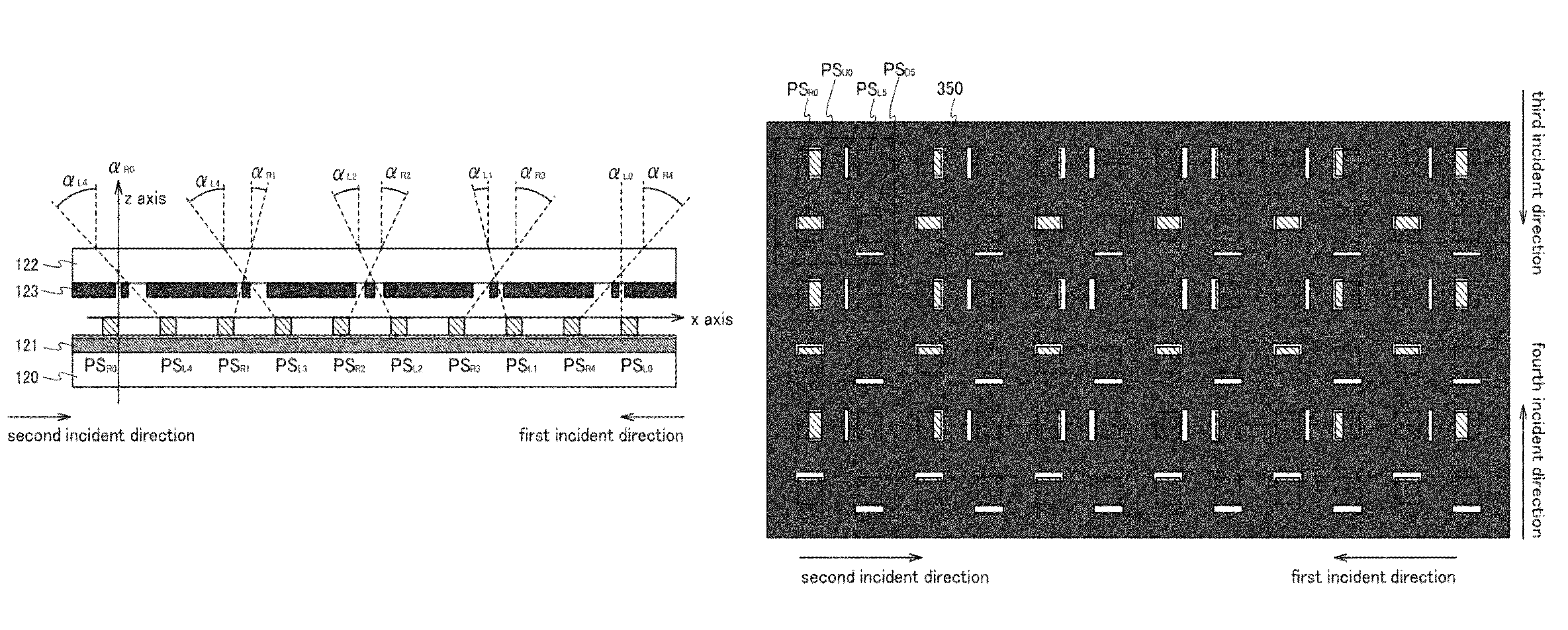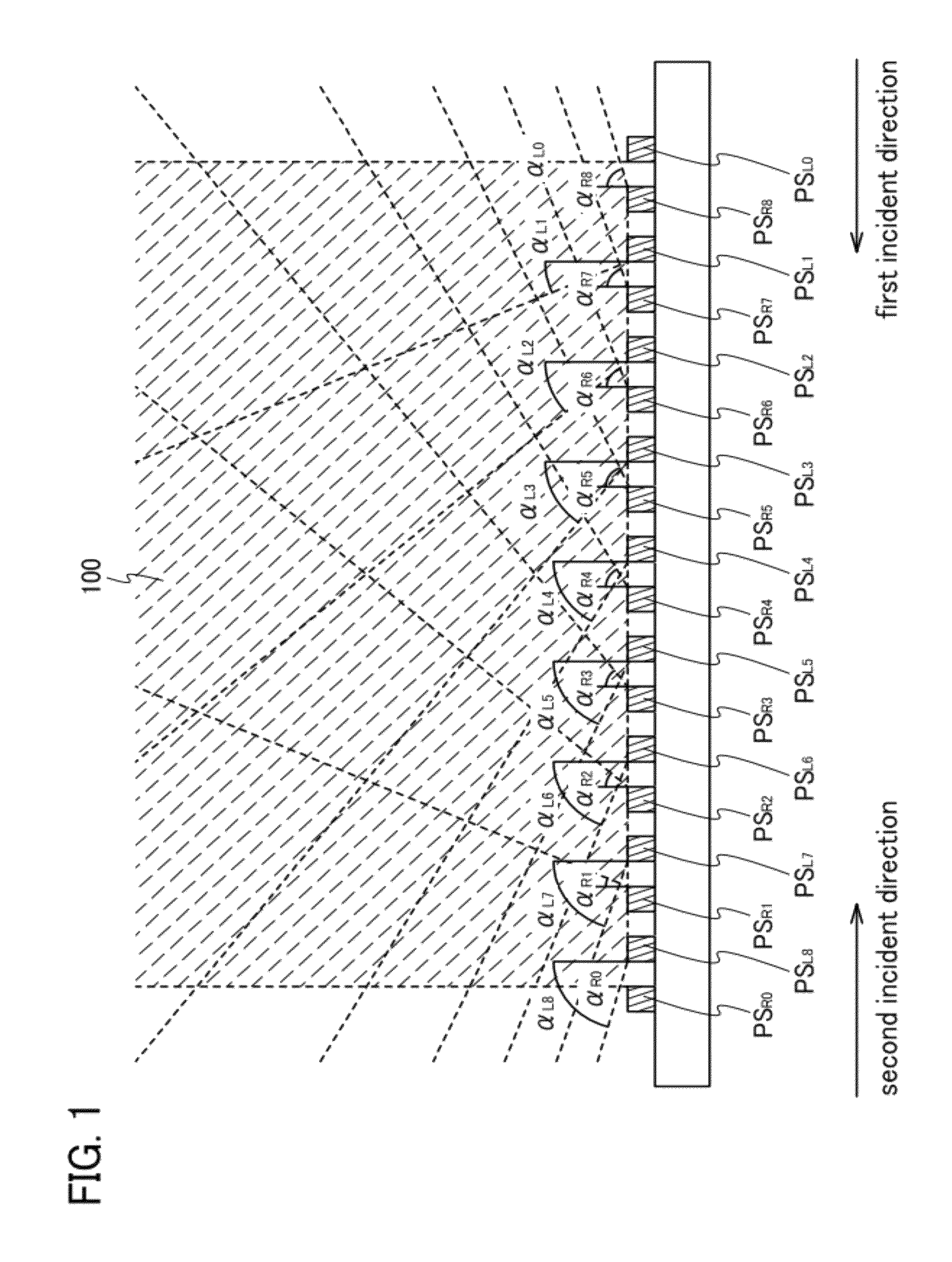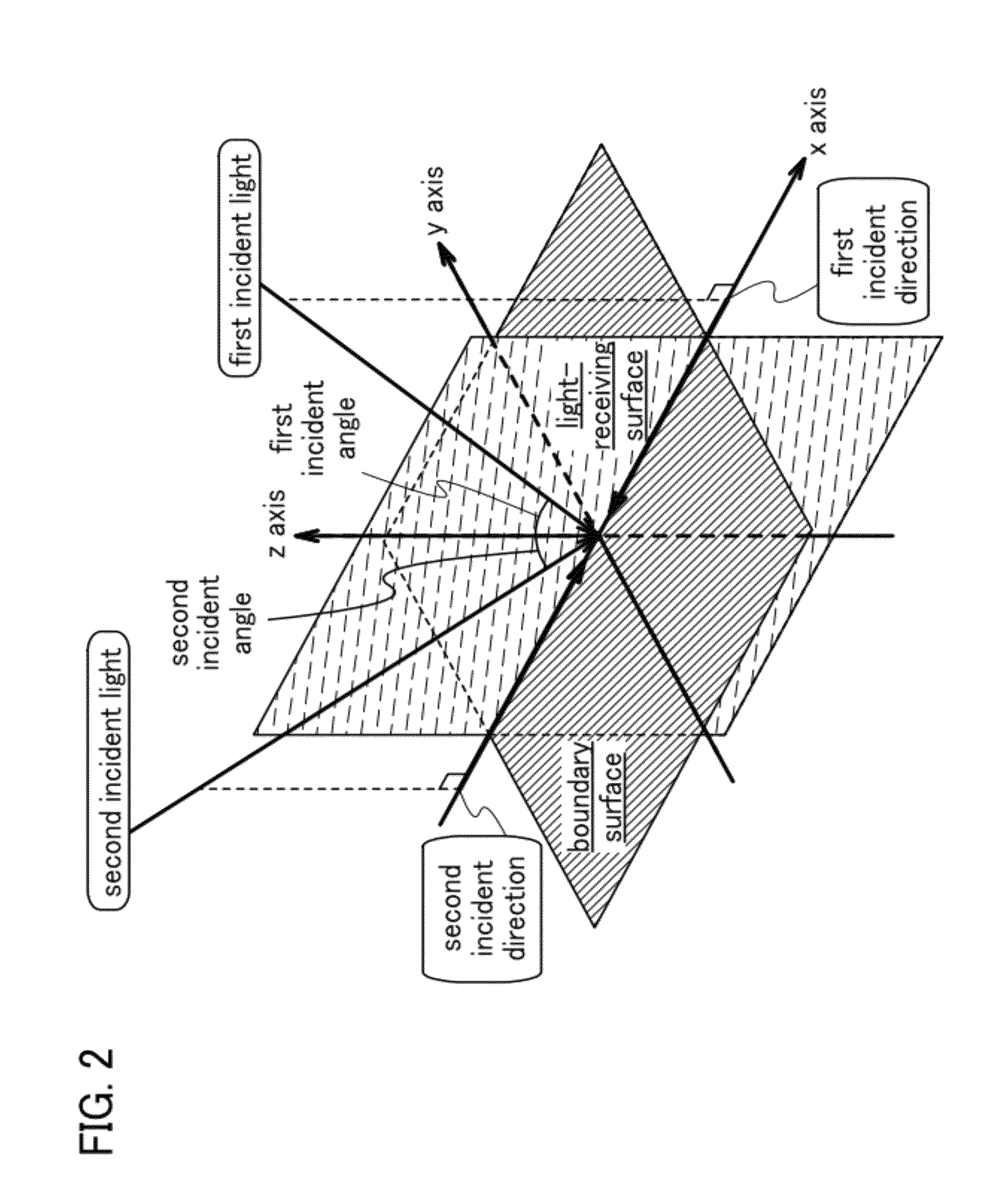Solid-state image sensing device and semiconductor display device
a sensing device and semiconductor technology, applied in the direction of diodes, semiconductor devices, radio-controlled devices, etc., can solve the problems of narrow detection range, uneven distribution of detectable area, and difficulty in obtaining the positional data of objects at some parts of the pixel portion, so as to reduce uneven distribution of detectable area, and increase the effect of detectable area
- Summary
- Abstract
- Description
- Claims
- Application Information
AI Technical Summary
Benefits of technology
Problems solved by technology
Method used
Image
Examples
embodiment 1
[0062]A solid-state image sensing device or a semiconductor display device, according to one embodiment of the present invention, includes a plurality of photosensors in a pixel portion. The plurality of photosensors can be classified by the incident direction of incident light. A solid-state image sensing device or a semiconductor display device, according to one embodiment of the present invention, includes at least a plurality of first photosensors and a plurality of second photosensors. Light from a first incident direction enters the plurality of first photosensors. Light from a second incident direction different from the first incident direction enters the plurality of second photosensors.
[0063]A solid-state image sensing device or a semiconductor display device, according to one embodiment of the present invention, will be described taking a structure of a pixel portion where a plurality of first photosensors PSR's and a plurality of second photosensors PSL's are alternately...
embodiment 2
[0117]In this embodiment, a specific structure of a photosensor included in a solid-state image sensing device or a semiconductor display device, according to one embodiment of the present invention, will be described.
[0118]FIG. 7A is an example of a circuit diagram illustrating a connection configuration of a photosensor 301. The photosensor 301 includes a photodiode 302 and an amplifier circuit 303. The photodiode 302 is a photoelectric conversion element which generates current when a junction of semiconductors is exposed to light. The amplifier circuit 303 is a circuit which amplifies current obtained through light reception by the photodiode 302 or a circuit which holds electric charge accumulated with the current.
[0119]The configuration of the amplifier circuit 303 may be any configuration as long as current generated in the photodiode 302 can be amplified or electric charge accumulated with the current can be held. It is necessary that the amplifier circuit 303 include a tran...
embodiment 3
[0226]In this embodiment, the photosensor 301 having a circuit configuration different from that in FIG. 7A will be described.
[0227]FIG. 20A is a circuit diagram of an example of the photosensor 301. In the photosensor 301 illustrated in FIG. 20A, the amplifier circuit 303 includes a transistor 304, a transistor 305, a transistor 306, and a transistor 307. The transistor 304 controls the supply of current generated in the photodiode 302 to the amplifier circuit 303. In the transistor 305, the current value or resistance value between a first terminal and a second terminal thereof depends on a potential supplied to the second terminal of the transistor 304. The transistor 306 functions as a switching element for supplying a potential of an output signal determined by the current value or resistance value, to the wiring OUT. The transistor 307 functions to reset the amount of electric charge accumulated in the amplifier circuit 303.
[0228]Specifically, in FIG. 20A, a first terminal of ...
PUM
 Login to View More
Login to View More Abstract
Description
Claims
Application Information
 Login to View More
Login to View More - R&D
- Intellectual Property
- Life Sciences
- Materials
- Tech Scout
- Unparalleled Data Quality
- Higher Quality Content
- 60% Fewer Hallucinations
Browse by: Latest US Patents, China's latest patents, Technical Efficacy Thesaurus, Application Domain, Technology Topic, Popular Technical Reports.
© 2025 PatSnap. All rights reserved.Legal|Privacy policy|Modern Slavery Act Transparency Statement|Sitemap|About US| Contact US: help@patsnap.com



